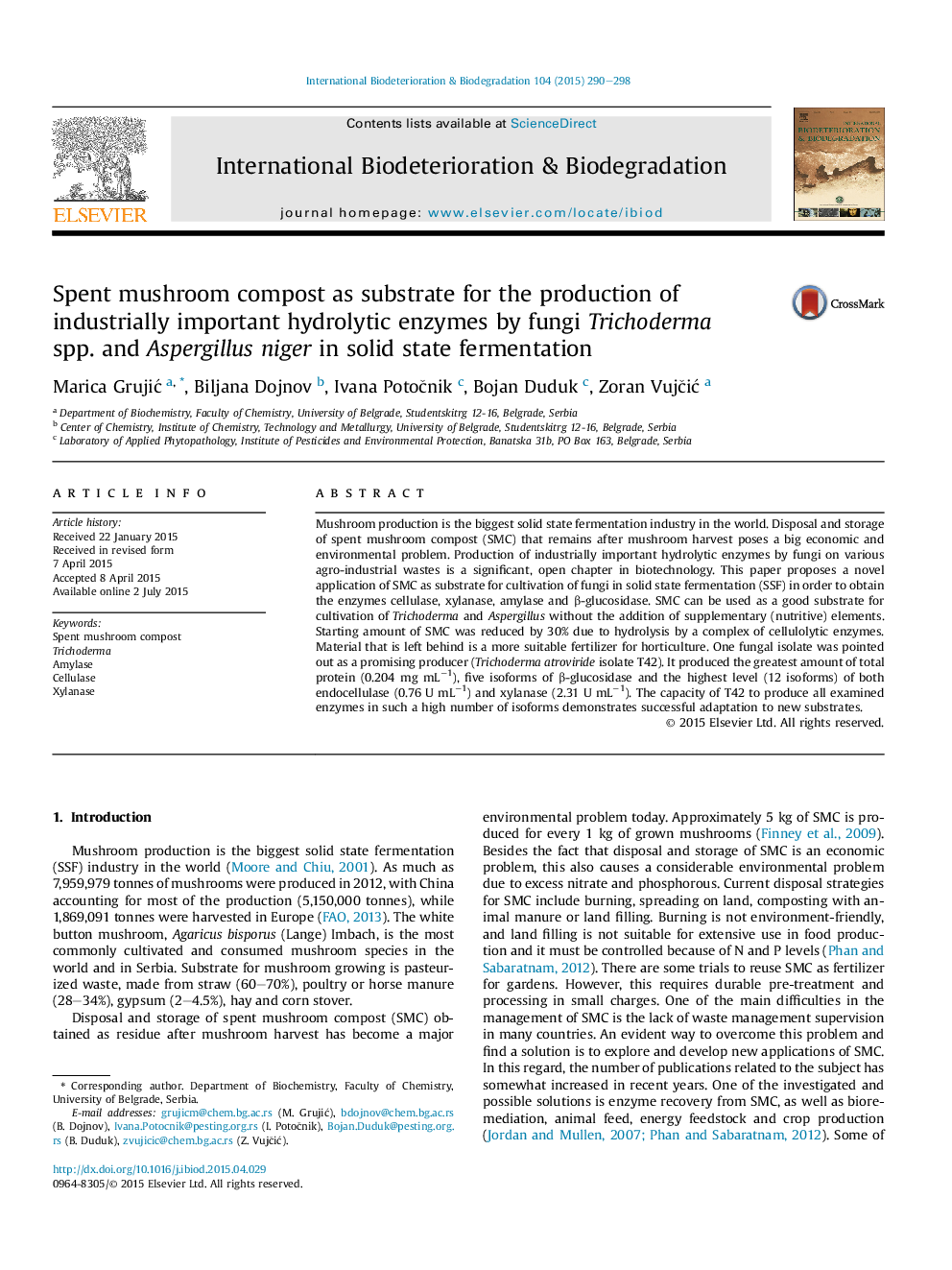| Article ID | Journal | Published Year | Pages | File Type |
|---|---|---|---|---|
| 4364492 | International Biodeterioration & Biodegradation | 2015 | 9 Pages |
•SMC volume was reduced by 30% after the production of fungal maintains and enzyme.•SMC proved to be a good substrate for fungal production of cellulolytic enzymes.•Trichoderma spp. utilizes SMC waste more efficient than reference isolate Aspergillus niger.•Trichoderma atroviride (T42) represents a new potential wt. strain for industrial purposes.
Mushroom production is the biggest solid state fermentation industry in the world. Disposal and storage of spent mushroom compost (SMC) that remains after mushroom harvest poses a big economic and environmental problem. Production of industrially important hydrolytic enzymes by fungi on various agro-industrial wastes is a significant, open chapter in biotechnology. This paper proposes a novel application of SMC as substrate for cultivation of fungi in solid state fermentation (SSF) in order to obtain the enzymes cellulase, xylanase, amylase and β-glucosidase. SMC can be used as a good substrate for cultivation of Trichoderma and Aspergillus without the addition of supplementary (nutritive) elements. Starting amount of SMC was reduced by 30% due to hydrolysis by a complex of cellulolytic enzymes. Material that is left behind is a more suitable fertilizer for horticulture. One fungal isolate was pointed out as a promising producer (Trichoderma atroviride isolate T42). It produced the greatest amount of total protein (0.204 mg mL−1), five isoforms of β-glucosidase and the highest level (12 isoforms) of both endocellulase (0.76 U mL−1) and xylanase (2.31 U mL−1). The capacity of T42 to produce all examined enzymes in such a high number of isoforms demonstrates successful adaptation to new substrates.
